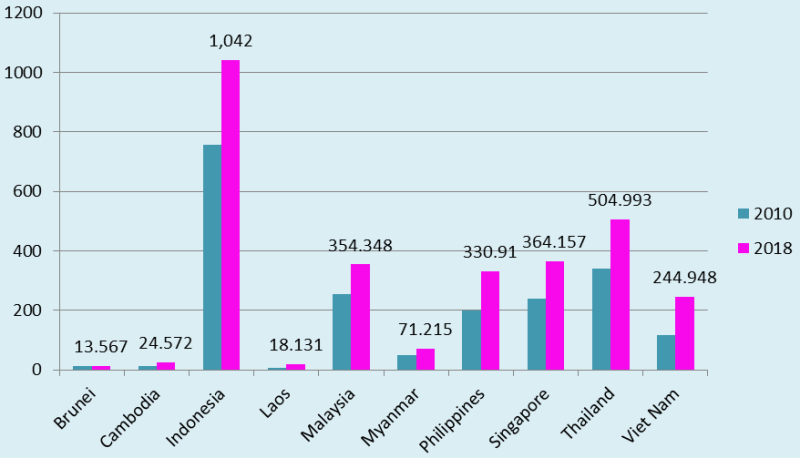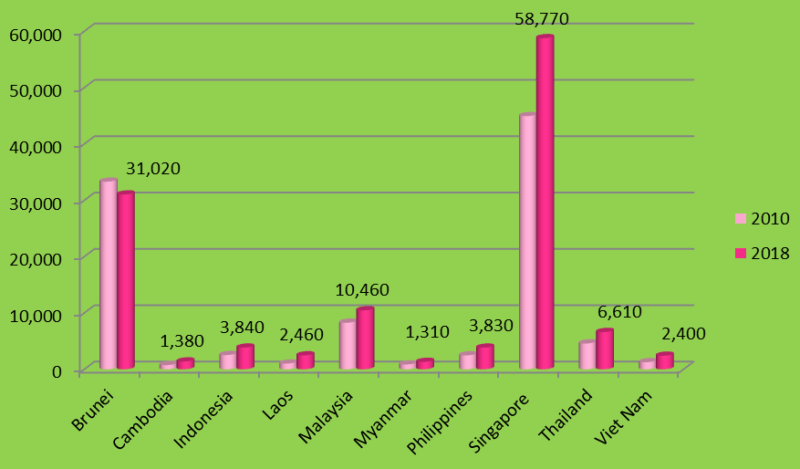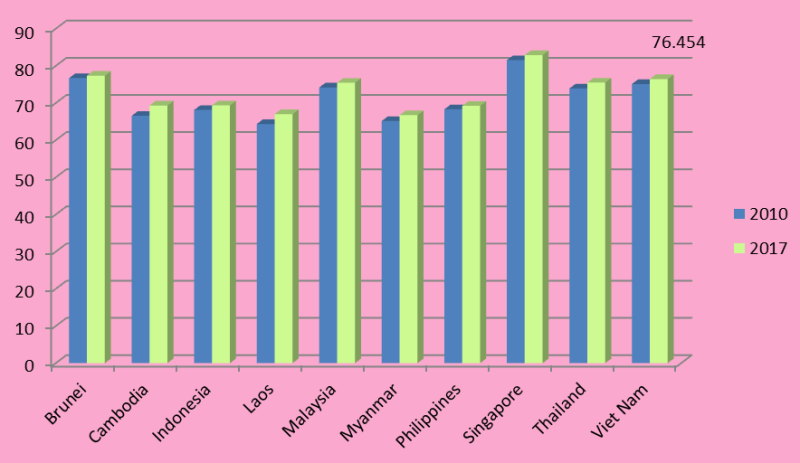How ASEAN countries have progressed since 2010
VGP - ASEAN has made tremendous economic progress over the recent decades with combined gross domestic products of almost US$2.8 trillion in 2017, ranking as the world 5th largest and Asian 3rd largest economy.
 |
|
ASEAN combined gross domestic product increases to over US$ 2.9 trillion in 2018. Source: World Bank |
The group’s GDP increased to more than US$2.9 trillion in 2018 and ASEAN still remained as the 5th largest economy of the world, according to the World Bank.
 |
|
Annual achieved and projected GDP growth rates of ASEAN member countries between 2016 and 2021 (Unit: Percent). Source: World Bank |
The above chart shows Viet Nam was one of the member countries having sustained GDP growth rates of above 6 percent throught out the reviewed period.
According to the General Statistics Office of Viet Nam, the country's economy expanded 7.08% last year, the highest rate since 2011.
 |
|
GDP size of ASEAN member countries in 2010 and 2018 (Unit: USD). Source: World Bank |
Viet Nam's GDP doubled to more than US$244 billion in 2018 from US$ 115 billion in 2010 when Viet Nam assumed the ASEAN Chairmanship.
 |
|
GDP per capita of ASEAN member countries in 2010 and 2018 (Unit: USD). Source: World Bank |
Singapore remains the member country with highest GDP per capita while the GDP of Viet Nam, Laos, and Cambodia in 2018 doubled that in 2010.
 |
|
Life expectancy of ASEAN member countries in 2010 and 2017 (Unit: Years). Source: World Bank |
Viet Nam's life expectancy increased to 76.454 years in 2018 from 75.117 years in 2010, ranking 3rd in ASEAN, according to the World Bank.
 |
|
ASEAN member countries' population in 2010 and 2018 (Unit: million). Source: World Bank |
On average, ASEAN population grew around 7.5 million persons annually between 1980 and 2017, according to the 2018 ASEAN Key Figures.
ASEAN is generally characterized by high proportion of youth and productive working-age population. The population below the age of 20 and within the age of 20-54 years accounted for 34.5 percent and 50.4 percent of the region's total population in 2017, respectively.
By Quang Minh
